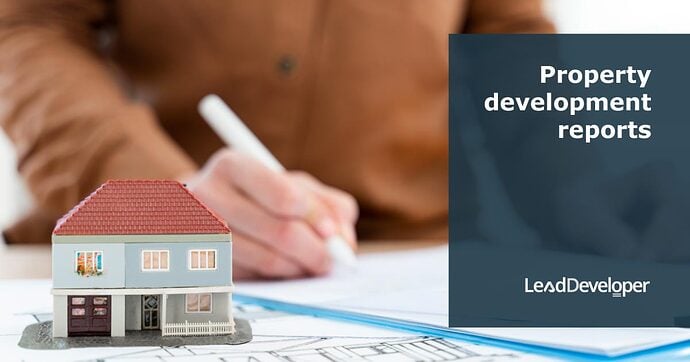Reports
Here is an overview of essential reports required in property development, including environmental, heritage, and engineering assessments. These reports ensure the protection of natural and cultural resources while facilitating sustainable development practices.
Arborist report
Needed for tree and vegetation assessment on a site, especially for removing large trees.
Specialist report
Required if contamination is suspected, often managed by demolition contractors for asbestos removal.
Cultural Heritage Management Plan (CHMP)
Essential for developments near water bodies with Aboriginal cultural significance, involving registered Aboriginal parties for heritage protection.
Dilapidation report
An account of pre-existing site conditions conducted by a builder.
Environmental audit
Necessary for sites with environmental overlays, assessing practices to minimise environmental harm.
Fire Engineer’s report
Important in Queensland due to high levy costs, included in feasibility studies.
Soil and traffic management reports
Assess soil conditions and traffic flow pre and post-development.
Cost plan and estimate
Provides a detailed cost analysis for the development project.
Frequently Asked Questions
How does the arborist report influence the development process?
The arborist report plays a critical role in the development process by assessing the impact of the project on trees and vegetation within the site. It determines whether trees can be retained or need to be removed, guiding sustainable development and ensuring compliance with environmental regulations.
This report is essential for maintaining the ecological balance and aesthetic value of the development area.
What is the significance of a Cultural Heritage Management Plan in property development?
A Cultural Heritage Management Plan (CHMP) is crucial in property development as it ensures the protection and management of Aboriginal cultural heritage sites near water bodies or other significant landscapes.
The involvement of registered Aboriginal parties in the development process through a CHMP helps in recognizing and conserving cultural values and heritage, allowing for development that respects and integrates these aspects.
This approach facilitates a respectful balance between modern development and the preservation of cultural heritage, ensuring that large developments and high-impact activities do not harm culturally sensitive areas.
How are environmental audits conducted for property development projects?
Environmental audits conducted for property development projects involve a comprehensive assessment of the site to identify any potential environmental risks or overlays. This process evaluates the extent to which a project adheres to practices that minimize harm to the environment, including impacts on flora, fauna, soil, and water bodies.
The audit aims to ensure that development projects are sustainable and comply with environmental regulations, focusing on conserving natural resources and mitigating negative environmental impacts. This ensures that developments proceed in an environmentally responsible manner, integrating ecological considerations into planning and execution.
What is an arborist report and why is it necessary?
An arborist report is a detailed examination of trees and vegetation on a property development site, crucial for assessing the health and sustainability of onsite flora. It is especially necessary when large trees may need to be removed, ensuring that any action taken is environmentally responsible and compliant with local regulations.
When is a specialist report required in property development?
A specialist report is required when there is suspicion of contamination on the development site. This report is often managed by demolition contractors and is crucial for identifying and safely removing hazardous materials like asbestos, ensuring the site is safe for development and does not pose health risks.
Why is a dilapidation report important?
A dilapidation report provides an account of the pre-existing conditions of the site and its surroundings. Conducted by a builder, it documents the state of the site before development begins, serving as a benchmark to assess any potential damage caused by construction activities.
What is the purpose of an environmental audit in property development?
An environmental audit assesses a site for environmental risks and overlays, evaluating how well a development project adheres to practices that minimize environmental harm. It is crucial for ensuring sustainable development that protects natural resources and complies with environmental laws.
Why is a Fire Engineer’s report crucial, especially in Queensland?
In Queensland, a Fire Engineer’s report is particularly important due to the high costs associated with the fire engineer levy. This report assesses fire safety and mitigation strategies, making it an essential component of feasibility studies for ensuring the safety and compliance of the development.
How do soil and traffic management reports contribute to property development?
Soil and traffic management reports assess the conditions of the soil and the impact of the development on local traffic patterns, both before and after the project. These reports ensure that the development is built on a suitable foundation and that it will not adversely affect local traffic flow.
What information does a cost plan and estimate provide?
A cost plan and estimate offer a detailed financial breakdown of the development project, including all expected costs. This document is crucial for budgeting, planning, and securing funding, ensuring the project is financially feasible and that resources are allocated efficiently.
Test Your Knowledge
1. What is the primary purpose of an Arborist Report in property development?
A) To design the landscape layout of the development site.
B) To assess tree and vegetation, especially for the removal of large trees.
C) To estimate the cost of landscaping work.
D) To identify potential sites for development.
2. When is a Specialist Report most likely required?
A) When planning the architectural design of the building.
B) If there is suspected contamination on the site.
C) Before starting the construction of roadways.
D) After completing the development project.
3. What does a Cultural Heritage Management Plan (CHMP) primarily protect?
A) Endangered animal species living on the development site.
B) The interests of the property developers.
C) Aboriginal cultural significance near water bodies.
D) Historical monuments and buildings.
4. Which report is an account of pre-existing site conditions?
A) Arborist report.
B) Environmental audit.
C) Dilapidation report.
D) Soil management report.
5. Why is an Environmental Audit necessary?
A) To audit the financial expenses of a development project.
B) For sites with environmental overlays, assessing practices to minimize environmental harm.
C) To evaluate the cultural impact of the development.
D) To ensure compliance with traffic regulations.
6. In which region is a Fire Engineer’s report particularly important, and why?
A) In Queensland, due to high levy costs.
B) In Victoria for bushfire management.
C) In New South Wales, for urban planning.
D) In Western Australia, due to high wind speeds.
7. What do soil and traffic management reports assess?
A) The profitability of property development.
B) The architectural designs for buildings.
C) Soil conditions and traffic flow pre and post-development.
D) The environmental impact of soil erosion.
8. What is the purpose of a Cost Plan and Estimate in property development?
A) To plan the schedule of the construction project.
B) To provide a detailed cost analysis for the development project.
C) To estimate the time required for project completion.
D) To assess the environmental costs.
Answers:
- B) To assess tree and vegetation, especially for the removal of large trees.
- B) If there is suspected contamination on the site.
- C) Aboriginal cultural significance near water bodies.
- C) Dilapidation report.
- B) For sites with environmental overlays, assessing practices to minimize environmental harm.
- A) In Queensland, due to high levy costs.
- C) Soil conditions and traffic flow pre and post-development.
- B) To provide a detailed cost analysis for the development project.
Assignment
Property Development Reports: Practical Exercise
Objective:
This exercise is designed to help students apply their knowledge of various reports required in property development. Through research, analysis, and practical application, students will deepen their understanding of how these reports contribute to sustainable development practices.
Instructions:
Complete each task listed below. For research-based questions, use credible sources to gather information. For practical tasks, simulate real-world scenarios where you would need to prepare or analyze the given reports.
Tasks:
Arborist Report Simulation
To Do: Choose a public park or a piece of undeveloped land in your area. Conduct a visual assessment of the trees and vegetation. Write a brief report outlining which trees might need to be removed and why, considering factors like health, size, and location.
Specialist Report on Contamination
- Research Question: Investigate the most common types of contamination found on development sites.
- To Do: Create a checklist for a preliminary contamination assessment that could be used by a demolition contractor before starting asbestos removal.
Cultural Heritage Management Plan (CHMP)
- Research Question: What are the steps involved in developing a CHMP for a site near a water body with Aboriginal cultural significance?
- To Do: Outline a proposal for engaging with registered Aboriginal parties to protect heritage on a hypothetical development site.
Dilapidation Report Exploration
- To Do: Imagine you are planning to develop a property adjacent to several old buildings. Create a template for a dilapidation report that includes key elements to be assessed in the neighboring buildings before starting your development.
Environmental Audit Case Study
- Research Question: Find a real-world example of a development project that underwent an environmental audit. Summarize the findings and how they impacted the development process.
Fire Engineer’s Report for Queensland
- To Do: Write an outline for a Fire Engineer’s Report that could be included in a feasibility study for a new residential development in Queensland. Include considerations specific to the region’s high levy costs.
Soil and Traffic Management Reports
- Research Question: Why are soil and traffic management reports crucial for post-development sustainability?
- To Do: Develop a plan for assessing soil conditions and managing traffic flow for a new shopping center development. Include pre and post-development strategies.
Cost Plan and Estimate Exercise
- To Do: Choose a small development project, such as a new community center. Draft a basic cost plan and estimate that includes construction costs, environmental mitigation measures, and any necessary reports or assessments.
Submission Guidelines:
- Compile your work into a single document.
- Include references for all research-based questions.
- For each “To Do” task, provide a detailed explanation of your approach and findings.
- Submit your completed assignment via mail or comments.



